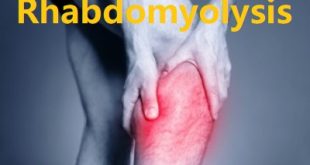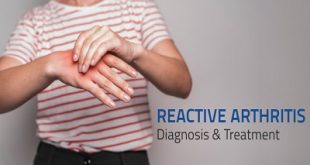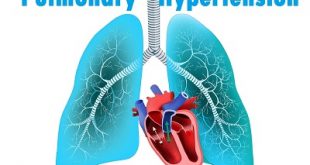Definition
Respiratory syncytial virus (RSV) is a common respiratory virus that infects the nose, throat, lungs, and breathing passages. RSV spreads through contact with respiratory droplets (coughing, sneezing, or kissing) from an infected person or touching surfaces contaminated with the virus and then touching your eyes, nose, or mouth. RSV can survive for many hours on hard surfaces such as tables and crib rails. The virus typically lives on soft surfaces such as tissues and hands for shorter amounts of time. Children are often exposed to RSV outside the home, in school, or in daycare centers. They can then transmit the virus to other members of the family.
RSV is so widespread that almost all children will have had an RSV infection by their 2nd birthday. RSV can be serious and can lead to severe illness among both children and older adults. While certain groups including premature and very young infants (≤6 months), individuals with chronic heart or lung disease, immunocompromised individuals, and older adults (65+), are at increased risk for severe disease, the potential for dangerous complications is a concern for all age groups.
Types of Respiratory Syncytial Virus
RSV is classified into two subtypes, A and B, whose predominance alternates during different epidemic seasons. The clinical impact of viral factors is controversial and many pieces of evidence suggest a critical role in the immune host response. Premature children are at the highest risk for severe RSV infection.
There are two major antigenic subtypes of human RSV (A and B) determined largely by antigenic drift and duplications in RSV-G sequences, but accompanied by genome-wide sequence divergence, including within RSV-F.
Epidemiology
Seasonality – RSV typically causes seasonal outbreaks throughout the world. In the northern hemisphere, these usually occur from October or November to April or May, with a peak in January or February. And in the southern hemisphere, wintertime epidemics occur from May to September, with a peak in May, June, or July. In tropical and semitropical climates, seasonal outbreaks usually are associated with the rainy season. The epidemic peaks are not as sharp as in temperate climates, and in some settings, RSV can be isolated in as many as eight months of the year.
Disruption of the typical seasonal pattern of RSV may result in off-season outbreaks. During the coronavirus disease 2019 (COVID-19) pandemic, mitigation measures (eg, mask-wearing, physical distancing, school closure) were associated with marked reductions in non-COVID-19 respiratory infections in children, including RSV, during the winter season. However, with the relaxation of mitigation measures, inter-seasonal RSV activity (eg, in the spring and early summer) has been described in both the Northern and Southern hemispheres.
Morbidity and mortality in children – RSV causes acute respiratory tract illness in persons of all ages. Almost all children are infected by two years of age, and reinfection is common.
Respiratory Syncytial Virus Symptoms
When a respiratory syncytial virus (RSV) infection affects the nose and throat (upper respiratory system), symptoms are usually mild and resemble those of the common cold. They include:
- Cough.
- Stuffy or runny nose.
- Mild sore throat.
- Earache.
- Fever, usually at the beginning of the illness. A high fever does not mean the illness is more severe.
Babies may have additional symptoms, including:
- A decreased interest in their surroundings.
- Listlessness and sleepiness.
- Fretfulness (irritability) and not sleeping well.
- Poor feeding.
- Apnea, where breathing stops for about 15 to 20 seconds. This usually occurs only in babies who were born prematurely and who also have a history of apnea.
It is hard to distinguish between a common cold and an RSV infection. But unless you or your child has an increased risk of complications from RSV, it usually is not important to know which virus causes symptoms.
RSV infection sometimes leads to bronchiolitis or pneumonia or both.
Symptoms of these complications include:
- Difficulty breathing, which may include breathing more rapidly than normal.
- Wheezing.
- Coughing that is getting worse. A child may choke or vomit from intense coughing.
- Lethargy, increased tiredness, decreased interest in surroundings, or loss of interest in food.
Causes of Respiratory Syncytial Virus
Respiratory syncytial virus (RSV) is highly contagious, meaning it spreads easily from person to person. There are two main types of RSV and many subtypes (strains). For this reason, you cannot have full immunity to the virus. And you may have many RSV infections throughout life.
People with RSV infection may spread the virus through their secretions (saliva or mucus) when they cough, sneeze or talk. You can catch the virus by:
- Touching an object or surface contaminated with the virus and then touching your nose, eyes, or mouth without first washing your hands. The virus can survive for more than 6 hours on countertops and other hard surfaces, such as doorknobs, and for 30 minutes on hands, clothing, or tissue.
- Close contact. If an infected person coughs or sneezes near you, you could breathe in RSV that’s in his or her saliva or mucus.
The virus spreads easily in crowded settings, such as childcare facilities, preschools, and nursing homes. Children attending school often spread the virus to their parents and siblings. The incubation period—the time from exposure to RSV until you have symptoms—ranges from 2 to 8 days but usually is 4 to 6 days.
You are most likely to spread the virus within the first several days after symptoms of RSV infection begin. You remain contagious for up to 8 days. Babies and young children may spread the virus for at least 3 to 4 weeks.
Many different viruses can cause lower respiratory tract infections in children. These viruses can cause symptoms that are similar to an RSV infection.
Risk factors
People of any age can get an RSV infection, but previous exposure tends to reduce the severity of symptoms. Here is a list of those with the highest risk of becoming seriously ill from RSV:
- Premature infants
- Very young children (under 6 months)
- Young children (under age 2) with congenital heart or chronic lung disease including asthma
- Young children and adults with weakened immune systems (from illness or medical treatments)
- Children with neuromuscular disorders that make it difficult for them to swallow or clear mucus secretions
- Older adults, in particular, those with heart or lung disease
Complications
Possible complications of RSV include:
- Pneumonia
- Bronchiolitis
- A middle ear infection
- Recurrent RSV infections
Those at the highest risk of complications or severe RSV symptoms include:
- Young infants, particularly those under 6 months
- Older adults, particularly those over the age of 65
- Infants born preterm
- Children with neuromuscular disorders
- Adults or children with weakened immune systems
- People with congenital heart or chronic lung diseases
An RSV infection may also worsen certain conditions, including:
- Asthma
- Chronic obstructive pulmonary disease often called COPD
- Heart failure
In severe cases, people may require treatment in a hospital. This enables health workers to:
- Monitor the symptoms, especially breathing problems
- Treat any dehydration
- If necessary, offer advanced forms of treatment and medical support, such as additional oxygen
Hospitalization for RSV usually only lasts a few days.
How to diagnose Respiratory Syncytial Virus?
To diagnose RSV, your child’s doctor will probably look at their medical history and do a physical exam, including listening to their lungs.
Your doctor might do some tests if your child is very sick or in order to rule out other problems. Tests for RSV include:
- Blood and urine tests to look for a bacterial infection and make sure your child isn’t dehydrated
- Chest X-rays to look for any signs of pneumonia
- Tests of material scraped out of your child’s nose or mouth
Treatment
Treatment will depend on your child’s symptoms, age, and general health. It will also depend on how severe the condition is.
Antibiotics are not used to treat RSV. Treatment for RSV is done to help ease symptoms. Treatment may include:
- More fluids: It’s very important to make sure your child drinks plenty of fluids. If needed, your child will get an intravenous (IV) line to give fluids and electrolytes.
- Oxygen: This is extra oxygen given through a mask, nasal prongs, or an oxygen tent.
- Suctioning of mucus: A thin tube is put into the lungs to remove extra mucus.
- Bronchodilator medicines. These may be used to open your child’s airways. They are often given in an aerosol mist by a mask or through an inhaler.
- Tube feeding: This may be done if a baby has trouble sucking. A thin tube is put through the baby’s nose and down into the stomach. Liquid nutrition is sent through the tube.
- Mechanical ventilation: A child who is very ill may need to be put on a breathing machine (ventilator) to help with breathing.
- Antivirals: Some children with severe infections may need treatment with antiviral medicine.
Talk with your child’s healthcare providers about the risks, benefits, and possible side effects of all treatments.
Home remedies for RSV
If you don’t need to be in the hospital, there are things you can do to make your time with RSV more comfortable:
- Drink plenty of fluids to stay hydrated.
- Use steam (such as from a shower or bath) to open up a stuffy nose.
- Older children and adults can drink hot tea or hot water with lemon to soothe a sore throat.
- Use honey as a natural cough suppressant (but don’t give honey to infants younger than 1-year-old).
- Take over-the-counter cold medications or acetaminophen (Tylenol) to help with discomfort.
Prevention of Respiratory Syncytial Virus
There is currently no vaccine to prevent RSV, but there are several ways you can decrease your risk of getting and spreading RSV and other respiratory viruses:
- Cover your coughs and sneezes, wash your hands, and clean frequently touched surfaces.
- Stay home when sick and avoid close contact with people at increased risk for severe infection.
- Get tested for flu, COVID-19, and RSV, as appropriate, if you have symptoms.
- Wear a face mask.
- Get an annual flu shot and stay up to date with your COVID-19 vaccinations and boosters.
Parents of young children should be careful to wash their own hands and their children’s hands often and avoid close contact with people who are sick. Keep children who are sick home from school.
Doctors may prescribe a medication called Pavilizumab (Synagis) to infants and young children with certain underlying health conditions who are at high risk of severe RSV infection.
 Diseases Treatments Dictionary This is complete solution to read all diseases treatments Which covers Prevention, Causes, Symptoms, Medical Terms, Drugs, Prescription, Natural Remedies with cures and Treatments. Most of the common diseases were listed in names, split with categories.
Diseases Treatments Dictionary This is complete solution to read all diseases treatments Which covers Prevention, Causes, Symptoms, Medical Terms, Drugs, Prescription, Natural Remedies with cures and Treatments. Most of the common diseases were listed in names, split with categories.








What other home remedy can been used for RSV?
Can ginger and garlic use as home remedy? please, list other home remedy, thank you…
For Respiratory Syncytial Virus (RSV), supportive home measures include staying hydrated, using a humidifier, getting adequate rest, and using saline nasal drops for congestion. While ginger and garlic are known for immune-boosting properties, it’s essential to consult with a healthcare professional, especially for viral infections. For severe cases or in infants, seek medical attention promptly.